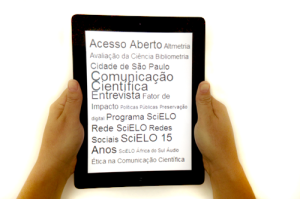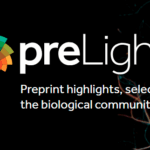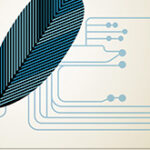
Image: SciELO.
Scientific research evolves from knowledge that has been previously accumulated throughout the long history of science. The most recent research outcomes are particularly important in this evolutionary process.
These days, researchers are finding themselves exposed to an avalanche of scientific information, above all that which is available digitally. This fact is making it a constant challenge to select what is actually relevant and follow recent developments in a particular field.
Nowadays academics have at their disposal many ways, products and services for accessing scientific articles, books and other materials. It is the cost of this access and its availability either online or via paper-based collections which is influencing the choices open to researchers. Therefore, what is of fundamental importance is making the correct selection from the store of institutional libraries.
Research was carried out in 2012 at five American universities and two in Australia by Carol Tenopir in collaboration with the Center for Information and Communication Studies, University of Tennessee, at Knoxville, USA. The results show that, when compared with previous research carried out in 2005, academics state that they have read a comparable number of articles. And, for the first time since 1977, when the research was originally carried out, the volume of articles read by academics has not increased. Rather, it may be reaching a peak.
Tenopir’s research1,2 shows some interesting results with regard to the reading habits of researchers in both countries. Sixty-nine percent of the articles read by researchers in the Australian universities which were targeted by Tenopir’s study, and 54% of those read by the researchers in the American universities surveyed, originated from library subscriptions, and almost all (97% in Australia, and 93% in the USA) are in electronic format. However, print is the preferred format for reading in 60% of cases in Australia and 51% of cases in the USA, and reading a text on a computer screen or other reading device is the preferred method for 48% of researchers in the USA and 42% in Australia. In both cases the reading rate for ebooks is low (7% for Australia and 8% for the USA). Books are obtained more often from libraries (37% in the case of the Australian libraries surveyed and 8% for the American libraries) than from purchases made by the researchers themselves (29% in the case of Australia and 22% in the case of the USA).
The research results³ obtained by Tenopir were presented at the Digital Information and User Behavior workshop which was organized by the National Federation of Advanced Information Systems in 2012³. The research, which was carried out at the Center for Information and Communication Studies, University of Tennessee in Knoxville and at six universities in the United Kingdom between 1997 and 2012, already pointed to the trends observed in the complete study1.
The number of article downloads at the University of Tennessee showed a slight decline in the 2010-2011 academic year (4.3 million downloads) in comparison with the ever increasing rates of previous years ( 2.6 million in 2008-2009 and 4.5 million in 2009-2010). At the same time, the average number of individual articles that academics stated that they had read in 2011-2012 was 288 as compared to 280 in 2005, representing a slight increase. The researchers state that reading scholarly articles is essential for their academic work and that 74% of the articles, 58% of the books and 45% of the other materials that they read are principally for the purpose of conducting research and redacting articles.
The time spent reading these materials is considerable, on average 49 minutes per article, 1 hour and 46 minutes per book and 42 minutes for other publications. On average, researchers read 22 articles, 7 books and 10 other types of publication per month. This adds up to 216 hours annually for reading articles, 148 hours for books and 84 hours for other types of publication, totaling 448 hours spent just on reading. However, it is time well spent, since academics who received awards for their work read more than the average: 30 articles, 9 books and 14 other publications. According to Tenopir³, researchers who publish more also read more, achieving approximately the same levels/ points/ ranking as award-winning researchers.
The role of social media in scholarly communication is gaining importance amongst researchers. However, studies show that academics read and share notes on social media more frequently than they write them, a scenario that is constantly changing, given the importance that social networks are gaining, even as new sources of measuring attention and research impact. Scientists recognize the value of social media as a source of inspiration and new ideas, despite being of the opinion that these are not a substitute for traditional articles.
The data presented by the authors of the surveys reveals a wealth of information about the reading profiles of academics over a long period of time. However, the questions posed may be becoming outdated. The research conducted by Tenopir and her colleagues defines “reading” as going beyond the titles and summaries to the main text of the articles, and in the digital era this may not be necessarily true, according to David Nicholas, former head of the Department of Information Studies at University College, London and currently a partner in the consulting firm CIBER Research based in Newbury, United Kingdom.
According to Nicholas, in the era of print publishing it was assumed that researchers read the entire article. In digital format, however, researchers for the most part browse the text of the article in search of specific pieces of information. In fact, upon examining the digital trails of access to articles left by researchers, Nicholas is able to conclude that they keep four or five windows open at the same time on different articles, and that the articles with the greatest likelihood of being read are the shortest.
As a scholar of this subject, Tenopir perceives that her surveys may become obsolete in short time, and comparisons with previous data may lose their meaning. Given the growing importance of databases, blogs and other sources of information, “When will the definition of ‘an article’ become so opaque that we can’t ask the question – how many papers have you read last month – any more?” ³
Notes
¹ Tenopir, C; Volentine, R; and Christian, L. Scholarly Reading by Academic Staff: Summary Results of a Study Conducted in 2012 at Two Universities in Australia. 2013, Available from: http://libvalue.cci.utk.edu/sites/default/files/AU.Faculty.Combined.Final_.pdf
² Tenopir, C; Volentine, R; and Christian, L. Scholarly Reading by Faculty in the United States: Summary Results of a Study Conducted in 2012 in Five Universities. 2013. Available from: http://libvalue.cci.utk.edu/sites/default/files/US.Faculty.Combined.Final_.pdf
³ Tenopir, C. (2012 June). Scholarly Reading in a Digital Age: Some things change, some stay the same. NFAIS. Philadelphia, PA. Available from: <Scholarly Reading in a Digital Age: Some things change, some stay the same>.
References
Altmetrics, Alternative metrics and Alternative measurements: new perspectives on the visibility and impact of scientific research. SciELO in Perspective. [viewed 16 February 2014]. Available from: <http://blog.scielo.org/en/2013/08/14/altmetrics-alternative-metrics-and-alternative-measurements-new-perspectives-on-the-visibility-and-impact-of-scientific-research/ >.
The SciELO in Perspective Blogs Space in 2014. SciELO in Perspective. [viewed 16 February 2014]. Available from: <http://blog.scielo.org/en/2014/01/22/the-scielo-in-perspectives-blog-space-in-2014/>.
“To blog or not to blog”– To blog or not to blog – what academics are doing. SciELO in Perspective. [viewed 16 February 2014]. Available from: < http://blog.scielo.org/en/2013/12/06/to-blog-or-not-to-blog-what-academics-are-doing/ >.
VAN NOORDEN, R. Scientists may be reaching a peak in reading habits. Nature. [viewed 3 February 2014]. Available from: <http://www.nature.com/news/scientists-may-be-reaching-a-peak-in-reading-habits-1.14658#auth-1>.
You do the sharing, I “like” it and we create the metrics. SciELO in Perspective. [viewed 16 February 2014]. Available from: <http://blog.scielo.org/en/2013/08/09/you-do-the-sharing-i-like-it-and-we-create-the-metrics/ >.
External link
CIBER Research – http://ciber-research.eu/
 About Lilian Nassi-Calò
About Lilian Nassi-Calò
Lilian Nassi-Calò studied chemistry at Instituto de Química – USP, holds a doctorate in Biochemistry by the same institution and a post-doctorate as an Alexander von Humboldt fellow in Wuerzburg, Germany. After her studies, she was a professor and researcher at IQ-USP. She also worked as an industrial chemist and presently she is Coordinator of Scientific Communication at BIREME/PAHO/WHO and a collaborator of SciELO.
Translated from the original in Portuguese by Nicholas Cop Consulting.
Como citar este post [ISO 690/2010]:








![Researchers engaging with policy should take into account policymakers’ varied perceptions of evidence [Originally published in the LSE Impact blog in January/2023] Illustration of a board, with wires connecting the elements.](https://blog.scielo.org/en/wp-content/uploads/sites/2/2023/01/Evidence-Perceptions-LSE-Impact_thumb.jpg)








Recent Comments